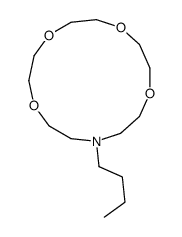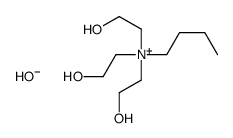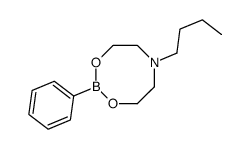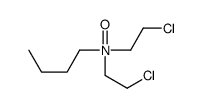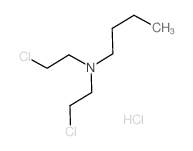102-79-4
| 中文名 | N-丁基二乙醇胺 |
|---|---|
| 英文名 | 2,2'-(Butylimino)Diethanol |
| 英文别名 |
2-[butyl(2-hydroxyethyl)amino]ethanol
N-Butyldiethanolamine Ethanol, 2,2'-(butylimino)bis- MFCD00002856 EINECS 203-055-0 2,2'-Butyliminodiethanol N-N-Butyldiethanolamine 2,2'-(Butylimino)diethanol Ethanol, 2,2'- (butylimino)bis- N,N-Bis(2-hydroxyethyl)butylamine |
| 密度 | 1.0±0.1 g/cm3 |
|---|---|
| 沸点 | 279.1±15.0 °C at 760 mmHg |
| 熔点 | −70 °C(lit.) |
| 分子式 | C8H19NO2 |
| 分子量 | 161.242 |
| 闪点 | 126.7±0.0 °C |
| 精确质量 | 161.141586 |
| PSA | 43.70000 |
| LogP | 0.88 |
| 外观性状 | 黄色液体带有胺气味 |
| 蒸汽密度 | 5.5 (vs air) |
| 蒸汽压 | 0.0±1.3 mmHg at 25°C |
| 折射率 | 1.476 |
| 储存条件 | 储存于阴凉、通风的库房。远离火种、热源、水源。防止阳光直射。保持容器密封。应与氧化剂、酸性物质分开存放,切忌混储。配备相应品种和数量的消防器材。储区应备有泄漏应急处理设备和合适的收容材料。 |
| 稳定性 | 避免与氧化剂、酸、水接触。 |
| 水溶解性 | miscible |
| 分子结构 | 1、 摩尔折射率:45.90 2、 摩尔体积(cm3/mol):162.8 3、 等张比容(90.2K):409.5 4、 表面张力(dyne/cm):40.0 5、 介电常数: 6、 偶极距(10-24cm3): 7、 极化率:18.19 |
| 计算化学 | 1.疏水参数计算参考值(XlogP):0.1 2.氢键供体数量:2 3.氢键受体数量:3 4.可旋转化学键数量:7 5.互变异构体数量:无 6.拓扑分子极性表面积43.7 7.重原子数量:11 8.表面电荷:0 9.复杂度:72.5 10.同位素原子数量:0 11.确定原子立构中心数量:0 12.不确定原子立构中心数量:0 13.确定化学键立构中心数量:0 14.不确定化学键立构中心数量:0 15.共价键单元数量:1 |
| 更多 | 1. 性状:无色或黄色液体,微有氨味。 2. 密度(g/mL,20/20℃):0.986 3. 相对蒸汽密度(g/mL,空气=1):5.5 4. 熔点(ºC):<−70 5. 沸点(ºC,98.8KPa):273~275 6. 折射率(20ºC):1.462 7. 闪点(ºC,开口):118 8. 黏度(mPa·s,25ºC):55 9. 黏度(mPa·s,60ºC):10.6 10. 体膨胀系数(K-1):0.00077 11. 蒸气压(mmHg,25ºC):1 12. 溶解性:溶于水、甲醇、乙醇、乙醚、丙酮、芳香烃和油酸等,不溶于亚麻仁油、棉子油、矿物油和石蜡等。 |
Synonym: 2,2'-(Butylimino)diethanol; N-Butyldiethanolamine; Ethanol, 2,2'-(butylimino)di-; Bis(beta-hydroxyethyl)butylamine; N-Butyl-2,2'-iminodiethanol; Butlydiethanolamine SECTION 2 - COMPOSITION, INFORMATION ON INGREDIENTS
Risk Phrases: 36/37/38 SECTION 3 - HAZARDS IDENTIFICATION EMERGENCY OVERVIEW Irritating to eyes, respiratory system and skin.The toxicological properties of this material have not been fully investigated. Potential Health Effects Eye: Causes severe eye irritation and possible injury. Skin: Causes skin irritation.
Ingestion: Causes gastrointestinal tract irritation. Inhalation: Causes respiratory tract irritation. Chronic: No information found. SECTION 4 - FIRST AID MEASURES Eyes: Immediately flush eyes with plenty of water for at least 15 minutes, occasionally lifting the upper and lower eyelids. Get medical aid immediately. Skin: Get medical aid. Flush skin with plenty of water for at least 15 minutes while removing contaminated clothing and shoes. Wash clothing before reuse. Ingestion: If victim is conscious and alert, give 2-4 cupfuls of milk or water. Never give anything by mouth to an unconscious person. Get medical aid. Inhalation: Remove from exposure and move to fresh air immediately. If not breathing, give artificial respiration. If breathing is difficult, give oxygen. Get medical aid. Notes to Physician: Treat symptomatically and supportively. SECTION 5 - FIRE FIGHTING MEASURES General Information: As in any fire, wear a self-contained breathing apparatus in pressure-demand, MSHA/NIOSH (approved or equivalent), and full protective gear. During a fire, irritating and highly toxic gases may be generated by thermal decomposition or combustion. Water may be ineffective. Material is lighter than water and a fire may be spread by the use of water. Vapors may be heavier than air. They can spread along the ground and collect in low or confined areas. Extinguishing Media: Use agent most appropriate to extinguish fire. Use water spray, dry chemical, carbon dioxide, or appropriate foam. SECTION 6 - ACCIDENTAL RELEASE MEASURES General Information: Use proper personal protective equipment as indicated in Section 8. Spills/Leaks: Absorb spill with inert material (e.g. vermiculite, sand or earth), then place in suitable container. Clean up spills immediately, observing precautions in the Protective Equipment section. Provide ventilation. SECTION 7 - HANDLING and STORAGE Handling: Wash thoroughly after handling. Remove contaminated clothing and wash before reuse. Avoid contact with eyes, skin, and clothing. Keep container tightly closed. Avoid ingestion and inhalation. Use with adequate ventilation. Storage: Keep container closed when not in use. Store in a tightly closed container. Store in a cool, dry, well-ventilated area away from incompatible substances. SECTION 8 - EXPOSURE CONTROLS, PERSONAL PROTECTION Engineering Controls: Facilities storing or utilizing this material should be equipped with an eyewash facility and a safety shower. Use adequate ventilation to keep airborne concentrations low. Exposure Limits CAS# 102-79-4: Personal Protective Equipment Eyes: Wear appropriate protective eyeglasses or chemical safety goggles as described by OSHA's eye and face protection regulations in 29 CFR 1910.133 or European Standard EN166. Skin: Wear appropriate protective gloves to prevent skin exposure. Clothing: Wear appropriate protective clothing to prevent skin exposure. Respirators: A respiratory protection program that meets OSHA's 29 CFR 1910.134 and ANSI Z88.2 requirements or European Standard EN 149 must be followed whenever workplace conditions warrant respirator use. SECTION 9 - PHYSICAL AND CHEMICAL PROPERTIES Physical State: Viscous liquid Color: pale yellow Odor: None reported. pH: Not available. Vapor Pressure: 1 mm Hg @ 25 C Viscosity: Not available. Boiling Point: 273.0 - 275.0 deg C @ 741.00m Freezing/Melting Point: -70 deg C Autoignition Temperature: 260 deg C ( 500.00 deg F) Flash Point: 126 deg C ( 258.80 deg F) Explosion Limits, lower: 1.10 vol % Explosion Limits, upper: 6.50 vol % Decomposition Temperature: Solubility in water: miscible Specific Gravity/Density: .9680g/cm3 Molecular Formula: C8H19NO2 Molecular Weight: 161.24 SECTION 10 - STABILITY AND REACTIVITY Chemical Stability: Stable under normal temperatures and pressures. Conditions to Avoid: Incompatible materials, strong oxidants. Incompatibilities with Other Materials: Strong oxidizing agents. Hazardous Decomposition Products: Nitrogen oxides, carbon monoxide, carbon dioxide, nitrogen. Hazardous Polymerization: Will not occur. SECTION 11 - TOXICOLOGICAL INFORMATION RTECS#: CAS# 102-79-4: KK0525000 LD50/LC50: CAS# 102-79-4: Oral, rat: LD50 = 4250 mg/kg. Carcinogenicity: N-n-Butyldiethanolamine - Not listed by ACGIH, IARC, or NTP. Other: See actual entry in RTECS for complete information. SECTION 12 - ECOLOGICAL INFORMATION SECTION 13 - DISPOSAL CONSIDERATIONS Dispose of in a manner consistent with federal, state, and local regulations. SECTION 14 - TRANSPORT INFORMATION IATA Not regulated as a hazardous material. IMO Not regulated as a hazardous material. RID/ADR Not regulated as a hazardous material. SECTION 15 - REGULATORY INFORMATION European/International Regulations European Labeling in Accordance with EC Directives Hazard Symbols: XI Risk Phrases: R 36/37/38 Irritating to eyes, respiratory system and skin. Safety Phrases: S 24/25 Avoid contact with skin and eyes. WGK (Water Danger/Protection) CAS# 102-79-4: 1 Canada CAS# 102-79-4 is listed on Canada's DSL List. CAS# 102-79-4 is not listed on Canada's Ingredient Disclosure List. US FEDERAL TSCA CAS# 102-79-4 is listed on the TSCA inventory. SECTION 16 - ADDITIONAL INFORMATION MSDS Creation Date: 10/14/1998 Revision #2 Date: 3/18/2003 The information above is believed to be accurate and represents the best information currently available to us. However, we make no warranty of merchantability or any other warranty, express or implied, with respect to such information, and we assume no liability resulting from its use. Users should make their own investigations to determine the suitability of the information for their particular purposes. In no way shall the company be liable for any claims, losses, or damages of any third party or for lost profits or any special, indirect, incidental, consequential or exemplary damages, howsoever arising, even if the company has been advised of the possibility of such damages. SECTION 16 - ADDITIONAL INFORMATION N/A |
|
毒理学数据: 急性毒性: 口腔 LD50 4250mg/kg(rat) 主要的刺激性影响: 在皮肤上面:在皮肤和粘膜上造成腐蚀性影响 在眼睛上面:强烈的腐蚀性影响 致敏作用:没有已知的敏化作用。 生态学数据: 总括注解 水危害级别1(德国规例)(通过名单进行自我评估)该物质对水是稍微危害的。 不要让未稀释或大量的产品接触地下水、水道或污水系统 若无政府许可,勿将材料排入周围环境。 CHEMICAL IDENTIFICATION
HEALTH HAZARD DATAACUTE TOXICITY DATA
|
| 符号 |

GHS05 |
|---|---|
| 信号词 | Danger |
| 危害声明 | H314 |
| 警示性声明 | P280-P305 + P351 + P338-P310 |
| 个人防护装备 | Faceshields;full-face respirator (US);Gloves;Goggles;multi-purpose combination respirator cartridge (US);type ABEK (EN14387) respirator filter |
| 危害码 (欧洲) | C:Corrosive |
| 风险声明 (欧洲) | R34 |
| 安全声明 (欧洲) | S26-S36/37/39-S45 |
| 危险品运输编码 | UN 2735 8/PG 2 |
| WGK德国 | 1 |
| RTECS号 | KK0525000 |
| 包装等级 | II |
| 危险类别 | 8 |
| 海关编码 | 29221980 |
|
~73% 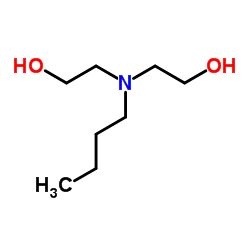
102-79-4 |
| 文献:Synthetic Communications, , vol. 31, # 18 p. 2817 - 2822 |
|
~% 
102-79-4 |
| 文献:Justus Liebigs Annalen der Chemie, , vol. 315, p. 128 |
|
~% 
102-79-4 |
| 文献:Tetrahedron Letters, , vol. 22, # 28 p. 2623 - 2626 |
| 上游产品 5 | |
|---|---|
| 下游产品 8 | |
| 海关编码 | 2922199090 |
|---|---|
| 中文概述 | 2922199090. 其他氨基醇及其醚,酯和它们的盐(但含一种以上含氧基的除外). 增值税率:17.0%. 退税率:13.0%. 监管条件:无. 最惠国关税:6.5%. 普通关税:30.0% |
| 申报要素 | 品名, 成分含量, 用途, 乙醇胺及其盐应报明色度, 乙醇胺及其盐应报明包装 |
| Summary | 2922199090. other amino-alcohols, other than those containing more than one kind of oxygen function, their ethers and esters; salts thereof. VAT:17.0%. Tax rebate rate:13.0%. . MFN tariff:6.5%. General tariff:30.0% |


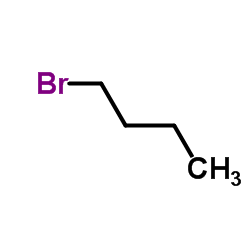
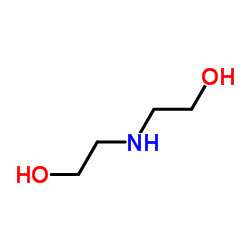

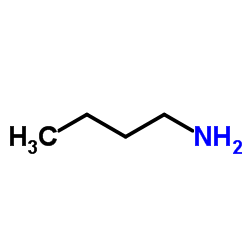
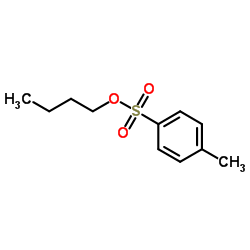
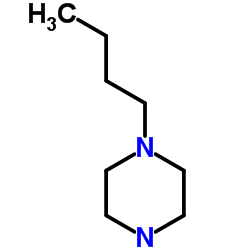

![9-butyl-6,12-dioxa-9-aza-5-silaspiro[4.7]dodec-2-ene结构式](https://image.chemsrc.com/caspic/402/69656-49-1.png)
